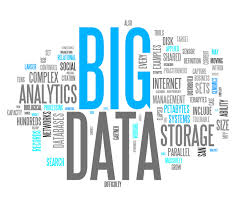Dr. Watson Says: |
 |
| ...Instead of thinking about the technical side of data, think about how you can better use the data you have to solve new problems... |
|
What Do You Say?
|
|
|
|
Dan Gilmore wrote a great First Thoughts column this week is on Big Data in the Supply Chain. He painted a fair picture of the state of “Big Data” in the supply chain and some potential applications. I think he nailed the heart of the matter with this paragraph:
“In my opinion, there is a lot of humbug and hype out there right now relative to Big Data, and a lack of clarity about where the applications/opportunities are in the supply chain. That said, I think there really is something here, but largely still emerging.”
Part of the hype and confusion around Big Data comes from the fact that people are using the term in many different ways.
If you talk to someone in IT or computer science, they are referring to a definition of Big Data that stresses the technology aspect. That is, the data set is too big for existing or standard technologies. Folks at place like Gartner typically refer to this as the 3 V’s—as in Volume (you have more data than can be stored on your existing servers), Velocity (you have data coming in from sensors so fast you can’t process it), and Variety (you are collecting data from text, video, or social media and the data doesn’t fit in typical relational databases).
It is this definition that will quickly get people talking about Hadoop and other interesting new technology.
However, I find that most people in supply chain do not need to and shouldn’t worry about this definition. And, the data we deal with (for the most part) in the supply chain does not fit this definition.
Previous Columns by
Dr. Watson |
|
|
Instead, there is another, more appropriate way the term Big Data is being used. In the press and in discussions in the hall, Big Data is being used to describe an interesting problem being solved or a creative way to use data.
 This definition leads to a better way to think about Big Data. Instead of thinking about the technical side of data, think about how you can better use the data you have to solve new problems, think about how you can combine data sets to answer tough questions, and think about an old problem you can now solve by collecting some new data. This definition leads to a better way to think about Big Data. Instead of thinking about the technical side of data, think about how you can better use the data you have to solve new problems, think about how you can combine data sets to answer tough questions, and think about an old problem you can now solve by collecting some new data.
It is here where I think the folks in the supply chain will see the most value. For example, people in the supply chain are collecting and using data to answer new questions: |